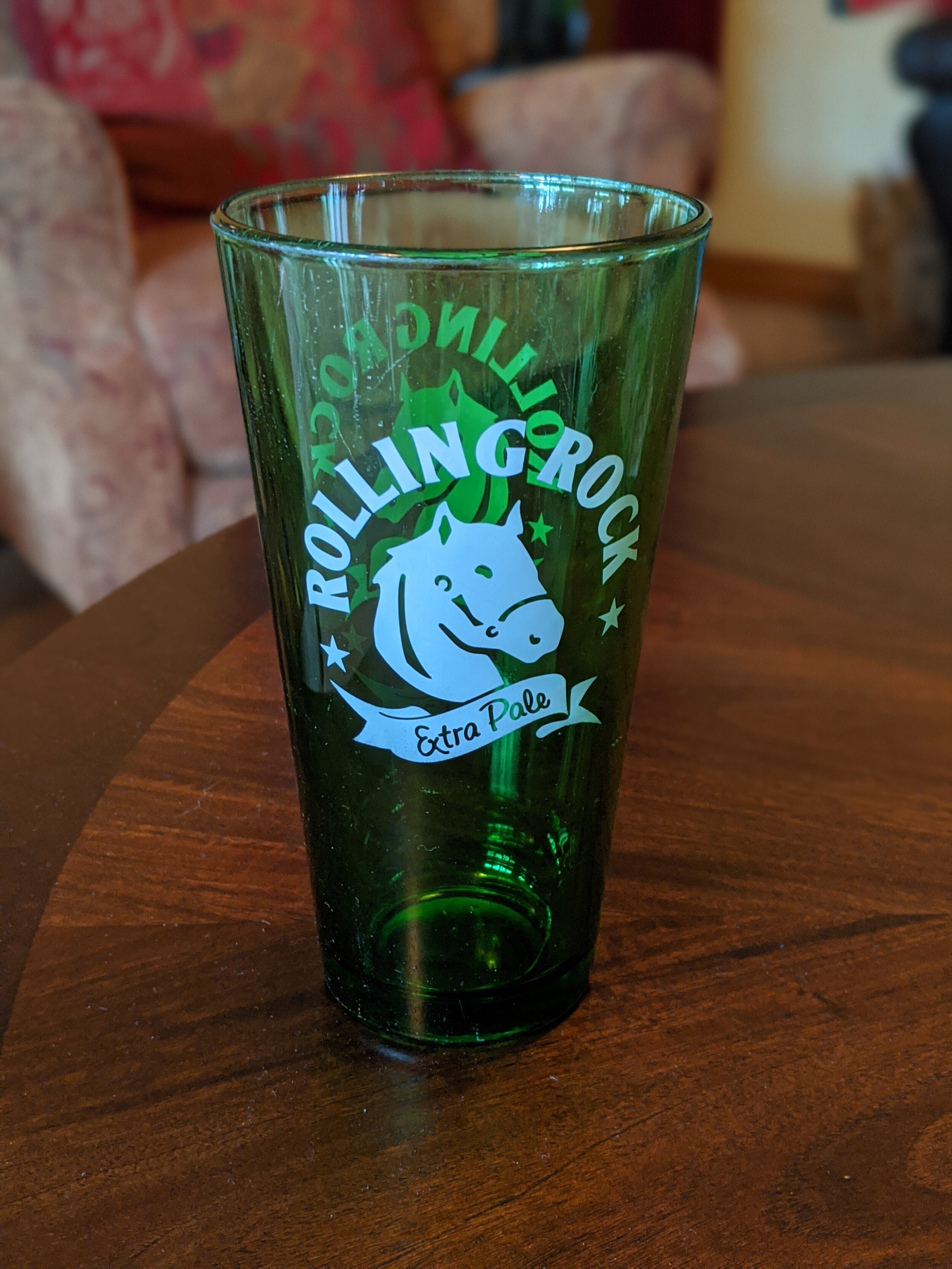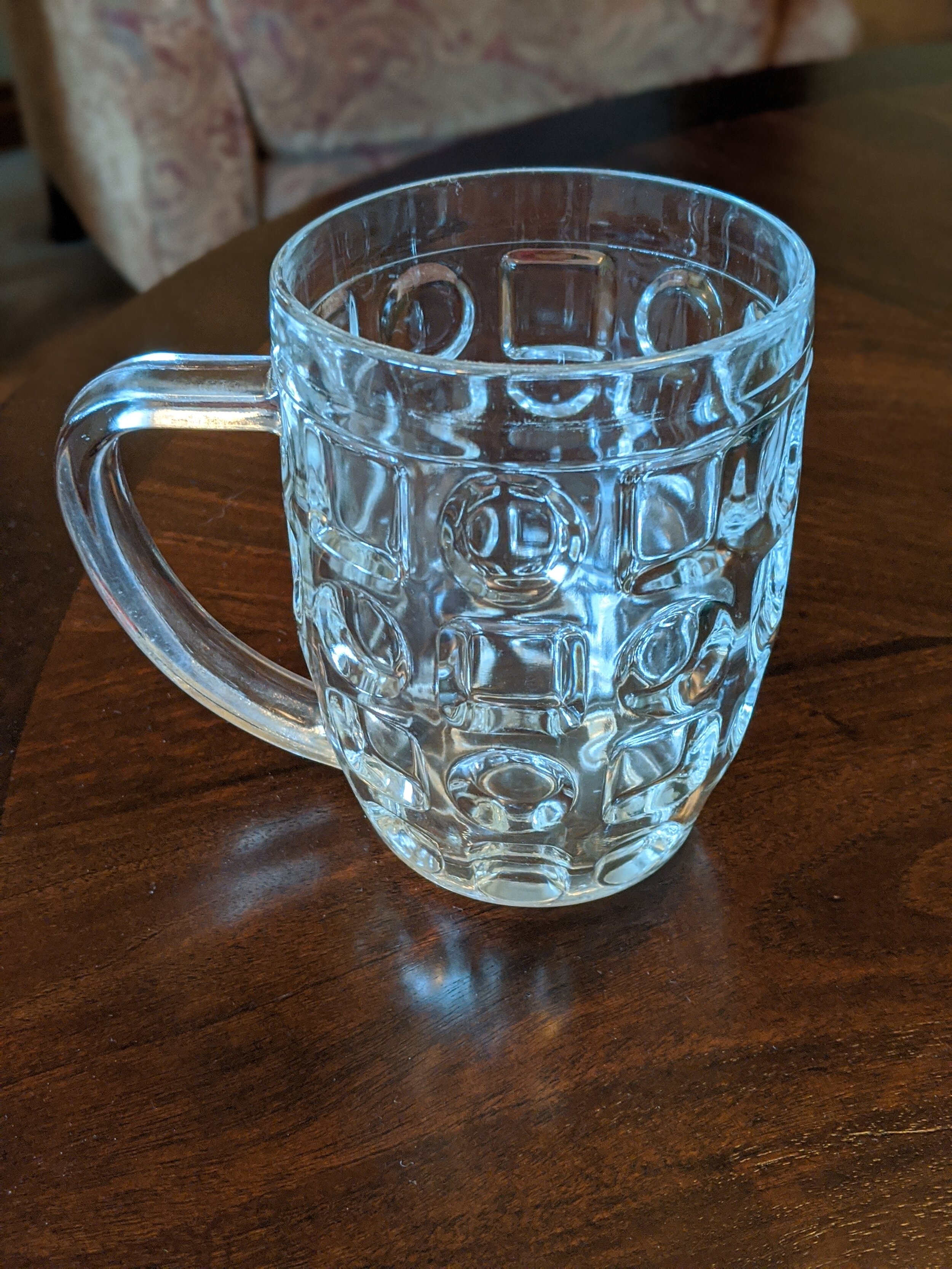Beer Glassware 101
I’m sure all beer drinkers (or just drinkers in general) have experienced the vast variety of glassware that exists in the world today, but why so many different types of glassware? This is a question I have been asked before along with myself wondering the same thing. So today we shall dive head first into this very question! This article will cover some common beer glass styles along with their characteristics, features, and their purpose in the world of beer. So go grab a cold one, with your favourite glass, and let’s go!
Let's start with some common types of glassware that you may see being served up in your local pub or restaurant.
Classic nonic pint glass or shaker pint glass
Flute or Pilsner flute
Tulip
Vase
Snifter
Mug/Stein
Classic nonic pint glass (right) & shaker pint glass (left)
These are probably the most common beer vessels you will see in your local pub or restaurant. Just to be clear, these are 2 different pint glasses with only one of them actually meant to be used for beer. Can you guess which one was not meant to hold beer? If you guessed the shaker then you would be correct. The original use for a shaker pint was literally for shaking; as in shaking cocktails. The shaker was the top portion of a cocktail mixing container, ideal for shaking up cocktails. Even though the shaker was not meant for beer it is used widely in restaurants and pubs for a number of reasons including being easily stacked, durability, and the ability to hold large volumes of liquid (More beer!). The nonic pint glass is also very common, very widely used in the UK, and carries most of the same functionality as the shaker pint. This glass has an iconic bump near the top making it ideal for holding and collecting foam. To me (and probably to many) these glasses have a nostalgic classic beer glass feel.
Common beer styles served in these types of glassware are stouts, pale ales, IPA’s, brown ales and amber ales.
Flute or pilsner flute
The flute glass is quite tall and slender usually with slightly wider opening which concentrates foam allowing for longer head retention. These glasses may also be referred to as pilsner glasses as that is a very common style of beer served in this glass. The slender style reduces surface area in contact with the beer and thus reducing the release of carbonation. This complements the pilsner style of being relatively higher in carbonation giving way to the crisp and refreshing experience.This glass is also very aesthetically pleasing showing off the beer’s head and beautiful colours in a tall attractive container.
Common beer styles served in this glass are the pilsners, dark lagers, wheat beers, and kolsch.
Tulip
The tulip glass is probably my favourite type of beer vessel simply because of the general functionality it provides. The concave lower portion allows for releasing of aromas that are then perfectly concentrated up at the convex top portion of the glass which is ideal for sensory enhancement (AKA taking a big whiff!). The convex top portion is also beneficial for concentrating foam and lasting head retention as well. A good head allows for containing carbonation and just looks really nice as well.
Common beer styles served in this glass are Belgian ales, sour beers, IPA’s, saisons, and specialty beers.
Vase
The vase is quite similar to the flute style beer glass in that it is tall and slender but the vase tends to take a more rounded or concave shape at the top. This shape allows aroma’s to be concentrated at the top allowing for further sensory enhancement (that sweet sweet smell). Also like the flute, the tall slim nature of the vase allows for head and carbonation retention. You may have held one of these when ordering a wheat beer as this glass is most commonly used for that style. The higher carbonation of a wheat style and wonderful spicy and/or banana-y aromas certainly are accentuated by this glass.
Common beer styles served in this glass are wheat beers, lagers, pilsners, and dark lagers.
Snifter
Probably the coolest name for a beer glass (at least to me) the snifter is a smaller bowl shaped glass. Originally used for liquors this glass was eventually discovered to be excellent for holding beer as well. The concave bottom is great for releasing aroma, similar to the tulip, and the inward taper at the top does well for funneling aromas to the nose. This glass is one that is meant to be held by the bowl so to transfer heat from your hand to the glass. This will raise the beer temperature to a level for the best experience. These glasses are inherently smaller in size relative to other beer glasses as they are meant to hold beer styles with a higher ABV, it is not always ideal to put that 12% barley wine in a big pint glass!
Common beer styles served in this glass are wee-heavies, barley wines, strong ales and specialty beers.
Mug/Stein
I don’t know about you but this glass automatically makes me think of Germany, lederhosen outfits and sausage. The classic beer mug or stein is a perfect vessel for drinking beer in very large volumes. The shape evolved from clay and/or metal mugs used in early Bavarian times. You may see some glass styles like this with a lid on top which, back in the day, was used to keep flies out your beer (to help with avoiding deadly plagues that came with those flies). The large handle does well to ensure a good hold on your cup and also reduce the amount of heat transferred from your hand, thus keeping your beer cold and refreshing for longer.
Common beer styles served in this glass are helles, pilsner, German style marzen and Vienna lagers.
So there you have it, a bit of an overview on some common beer glasses you may come in contact with and perhaps now you might think twice about what the glass means for your beer. We only covered a few types in this article but there are many different types and styles of beer glass in the world today that you can explore. As a quick guideline to choosing a beer glass it is best to use a smaller volume glass with a higher ABV beer and vice versa for glasses with larger volumes. Also, you may have noticed beer glasses that are unique to their own brand, Stella and Chimay are good examples, this is more than just the brewery wanting to make a glass with their name on it. There was time put into crafting that glassware to compliment their beer specifically so if you have the option of drinking a beer from a glass of the same brand, I would highly recommend you do so. So get out there and try a few beers from a few different types of glassware, I bet you’ll taste each brew a bit differently in the future. Cheers!







